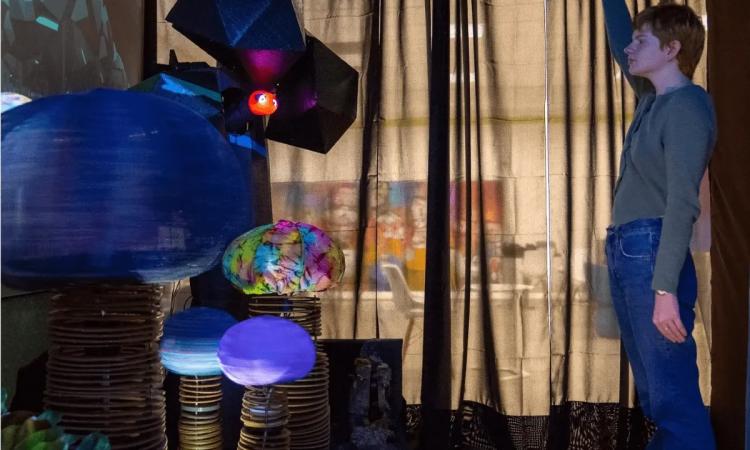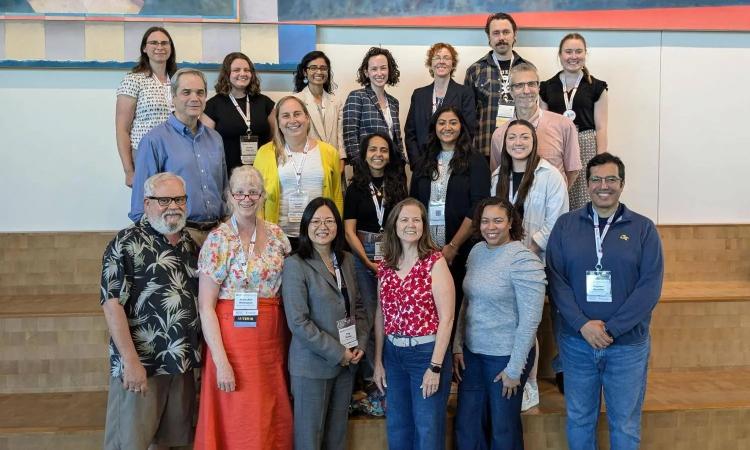
Peaking behind the top of black curtains inside the Ferst Center for The Arts lobby are collections of two-by-fours nailed together in seemingly random shapes.
Behind the curtains, these structures turn into color and bright exhibits, representing five semesters of work by the Electronic ARTrium Vertically Integrated Projects (VIP) team.
“What we tried to create was a magical experience for the player,” said third-year computer science student Soham Agarwal, who worked on the project for two semesters. “They go into the exhibit, do something in real life, and that’s emulated in the game.”
Led by School of Electrical and Computer Engineering (ECE) Professor Mary Ann Weitnauer, over 150 students worked to combine light detection and ranging (LiDAR), animatronics, digital storytelling, and many other technologies to create an interactive, and at times, physically challenging gaming experience.
“It’s the equivalent of 50 capstone projects,” Weitnauer said. “We had so many different smaller projects to complete to create this.”
There are four exhibits in total, each housing a different motion tracking-focused game that follows the adventure of a lost bee, aptly named “Mr. Bee.” Users help Mr. Bee through a magical forest to get back to his hive.
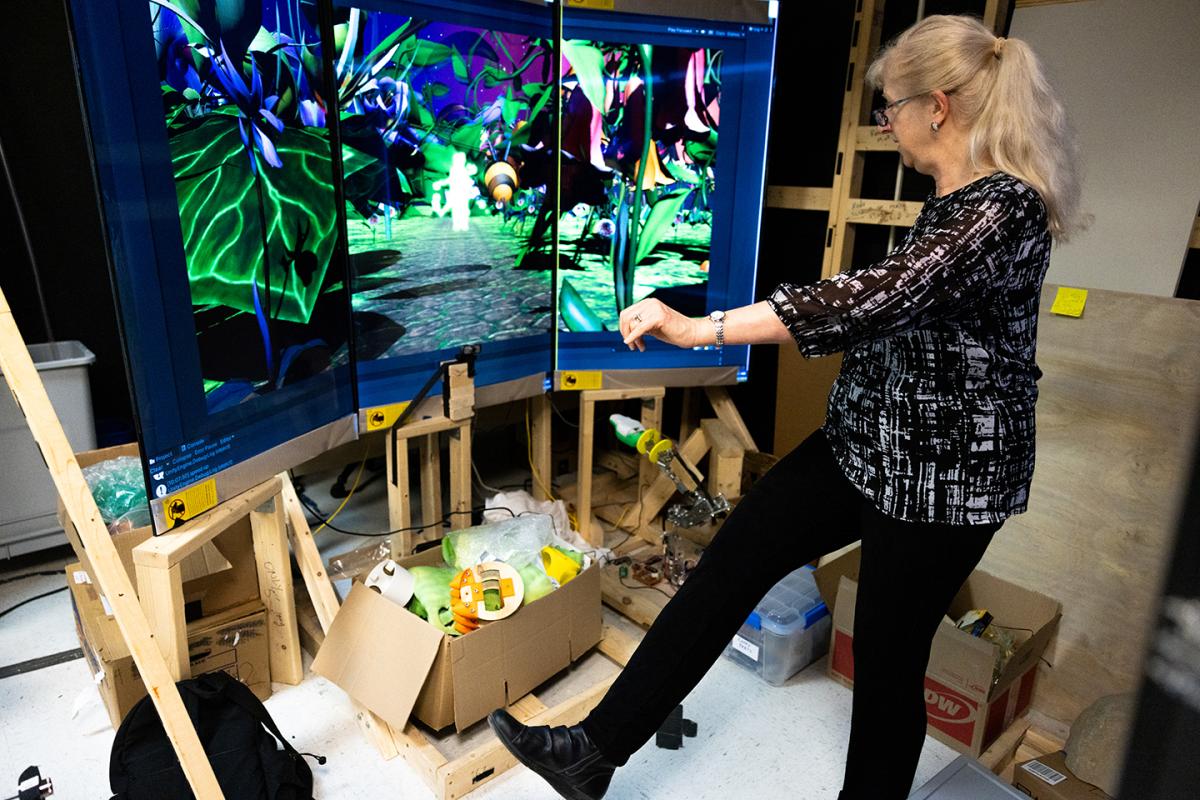
Weitnauer testing portions of the interactive exhibit before its assembly in the Ferst Center lobby. The goal of the Electronic ARTrium VIP team and its projects is to give participants a sense of wonder and intrigue as they experiment with how their body movements change the art.
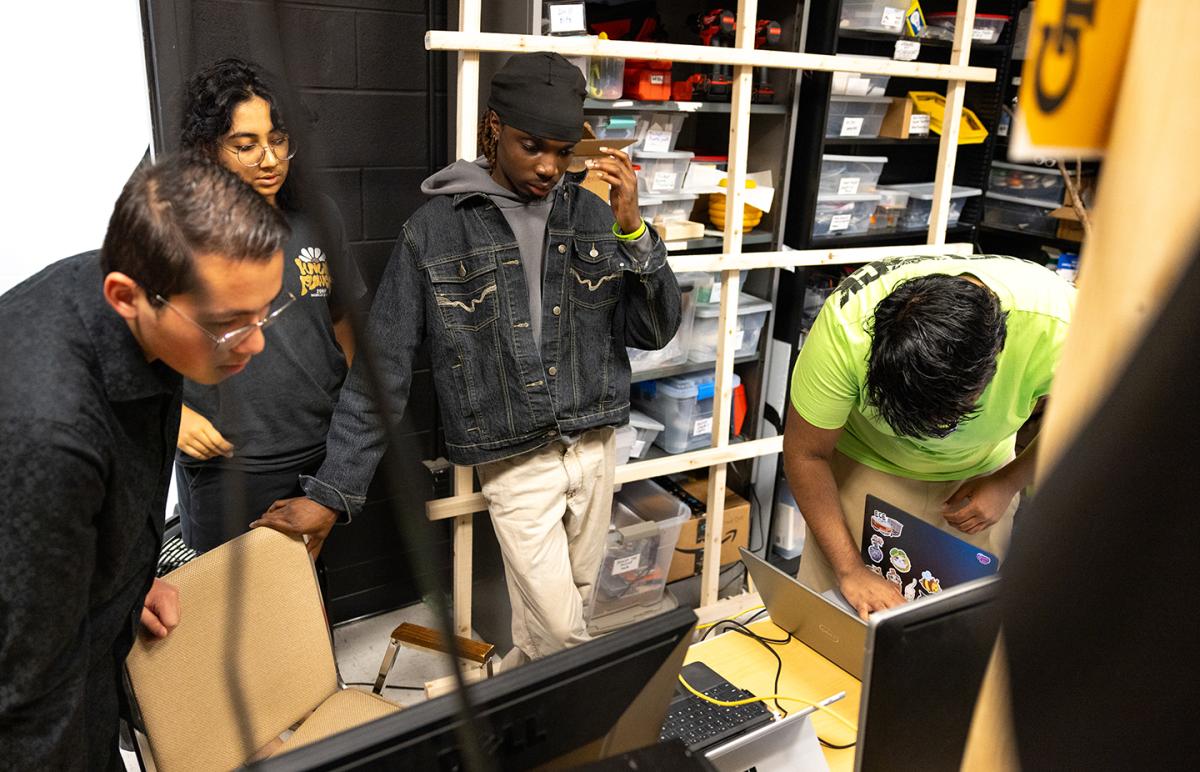
The Electronic ARTrium VIP team working behind the scenes.
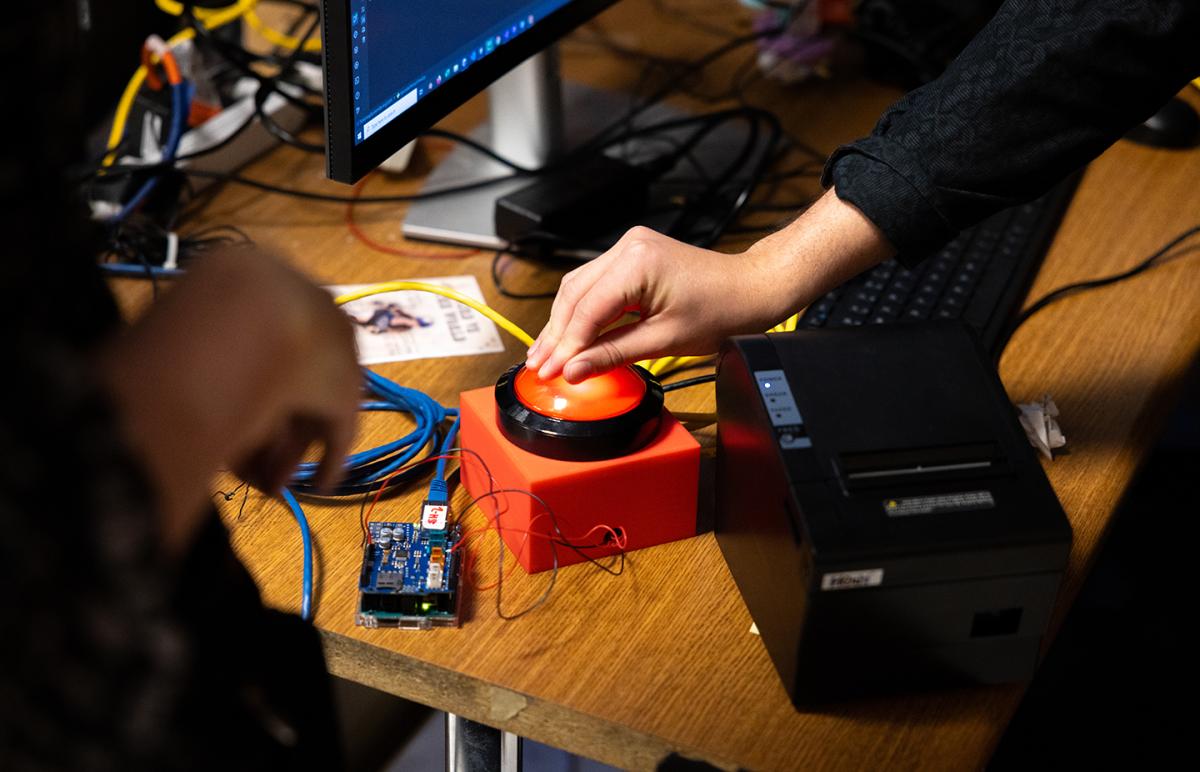
The button being configured which users push to start the interactive experience.
In the first game, players guide Mr. Bee through an obstacle course by bending their torso left and right. The next is a memory game, where the user points to animatronic flowers in a specific order to unlock the next level. Another requires the user to match poses on a screen, guiding Mr. Bee through a mysterious mushroom forest.
“It’s interactive and immersive but it doesn’t require any wearables,” Weitnauer said.
Completing each game unlocks the next level and a number, which the players use to open a mechanical honeycomb door, marking the end of Mr. Bee’s journey.
“The goal was for people to walk away saying ‘that was fun,’” Weitnauer said.
While they’ve had interactive exhibitions in the past, this one was different. The VIP group has never had a narrative be part of the experience. On top of all the technical parts of the project, these engineering and computer science students also had to come up with a story.
They worked with Ivan Allen College of Liberal Arts Distinguished Professor Janet Murray, who’s renowned for digital storytelling, to write the four-part adventure.
“I had the students read some of her work to understand that there needed to be some stakes,” Weitnauer said. “We wanted there to be some pressure in every game. If you don’t complete the objective in time, the story won’t progress.”
Once the story was complete, they needed a digital environment for it to play out.
This included using programs like Unity and Blender for animation and building the game engine, SolidWorks to build the models that would become the animatronics and syncing up the cameras so they could accurately capture a player’s movement.
Once they completed the digital aspects, they had to build and decorate physical sets, as well as sync the gameplay with the three animatronic narrators central to the story: Cappy the Caterpillar, Snowy the Owl, and Sandy the Snake.
“It’s a surprisingly complex game,” said Clayton Walker, a recent ECE graduate who helped on the project as an undergraduate researcher. “There’s a lot of elements to it and we were able to leverage the diverse set of skill sets from the VIP students to make something really cool.”
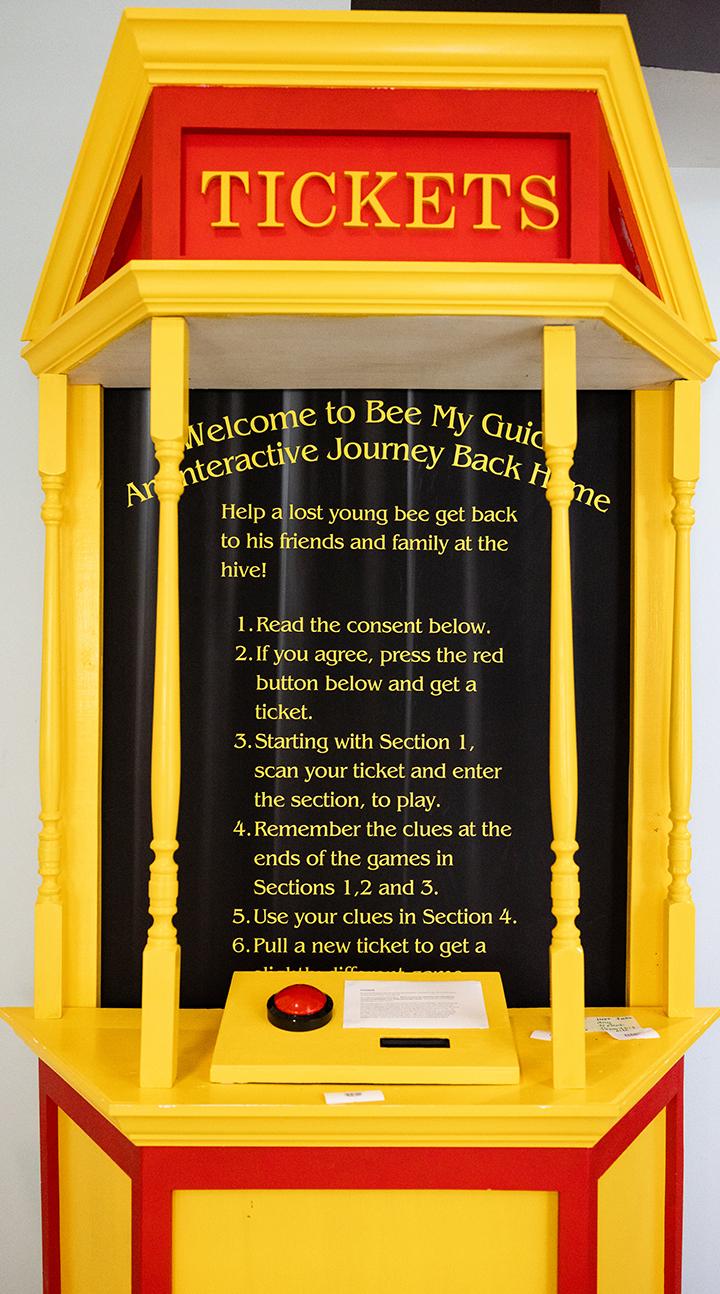
The ticket booth users visit to start the exhibit with rules and instructions to help Mr. Bee get back to his hive.
The game was also designed to inspire grade school children to take an interest in STEM. As part of this effort, the team partnered with a second-grade art class at Hope Hill Elementary to have students create patterns that became the textures for many of the animated animals featured in the game.
“We’ve had several parents come by to see what became of their kids’ patterns,” Weitnauer said.
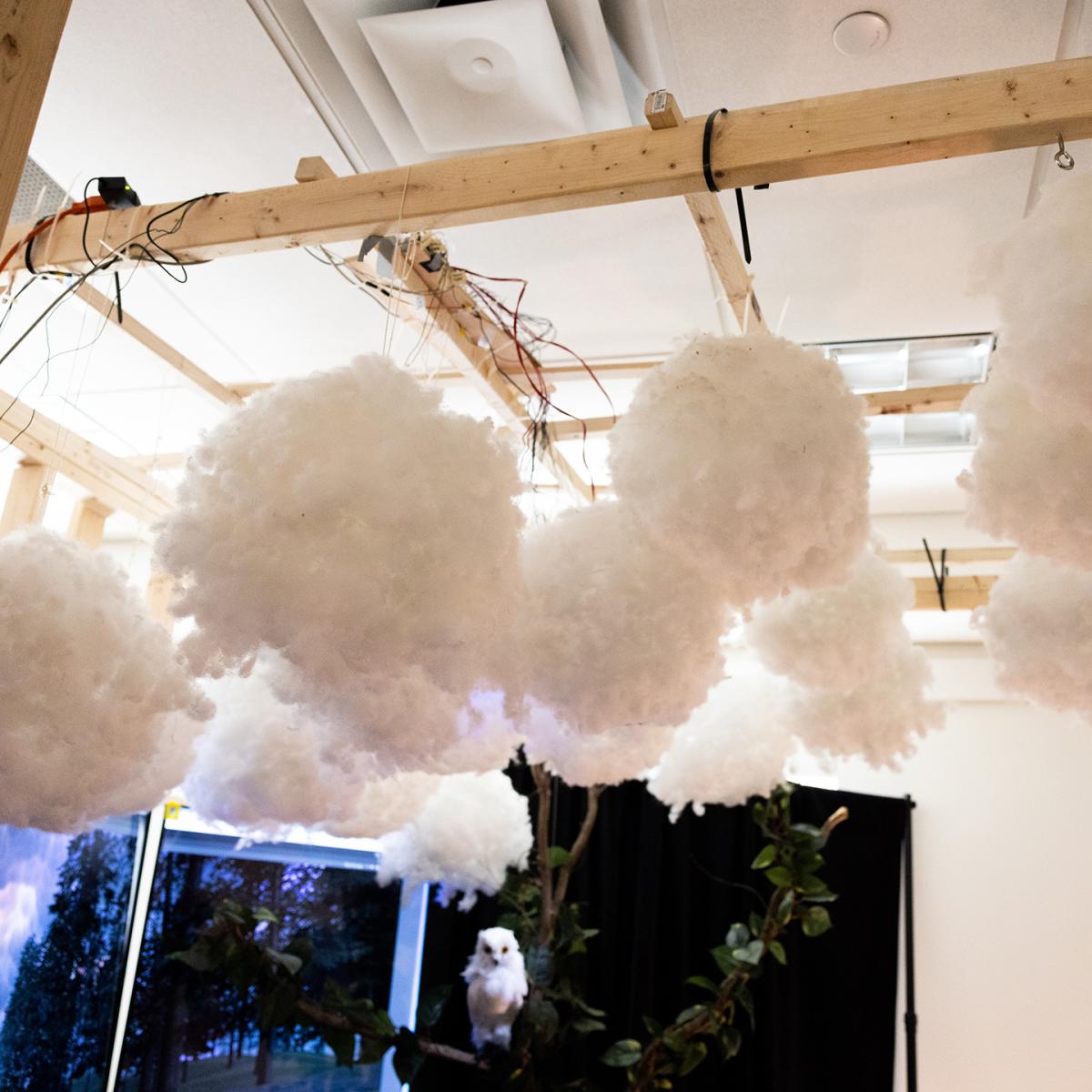
Clouds over the mysterious mushroom forest where users bend their bodies to guide Mr. Bee home.
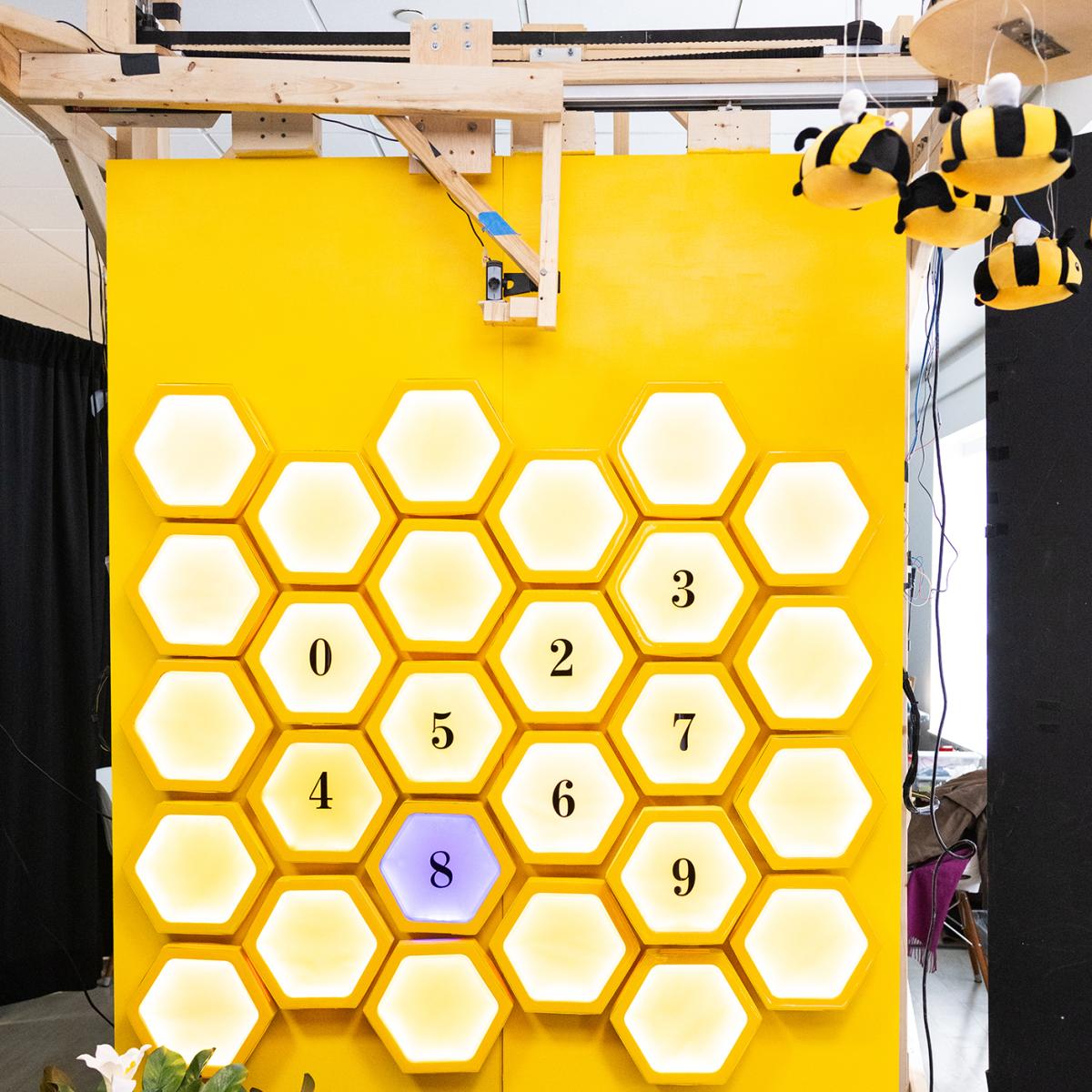
The mechanical honeycomb door, marking the end of Mr. Bee’s journey.
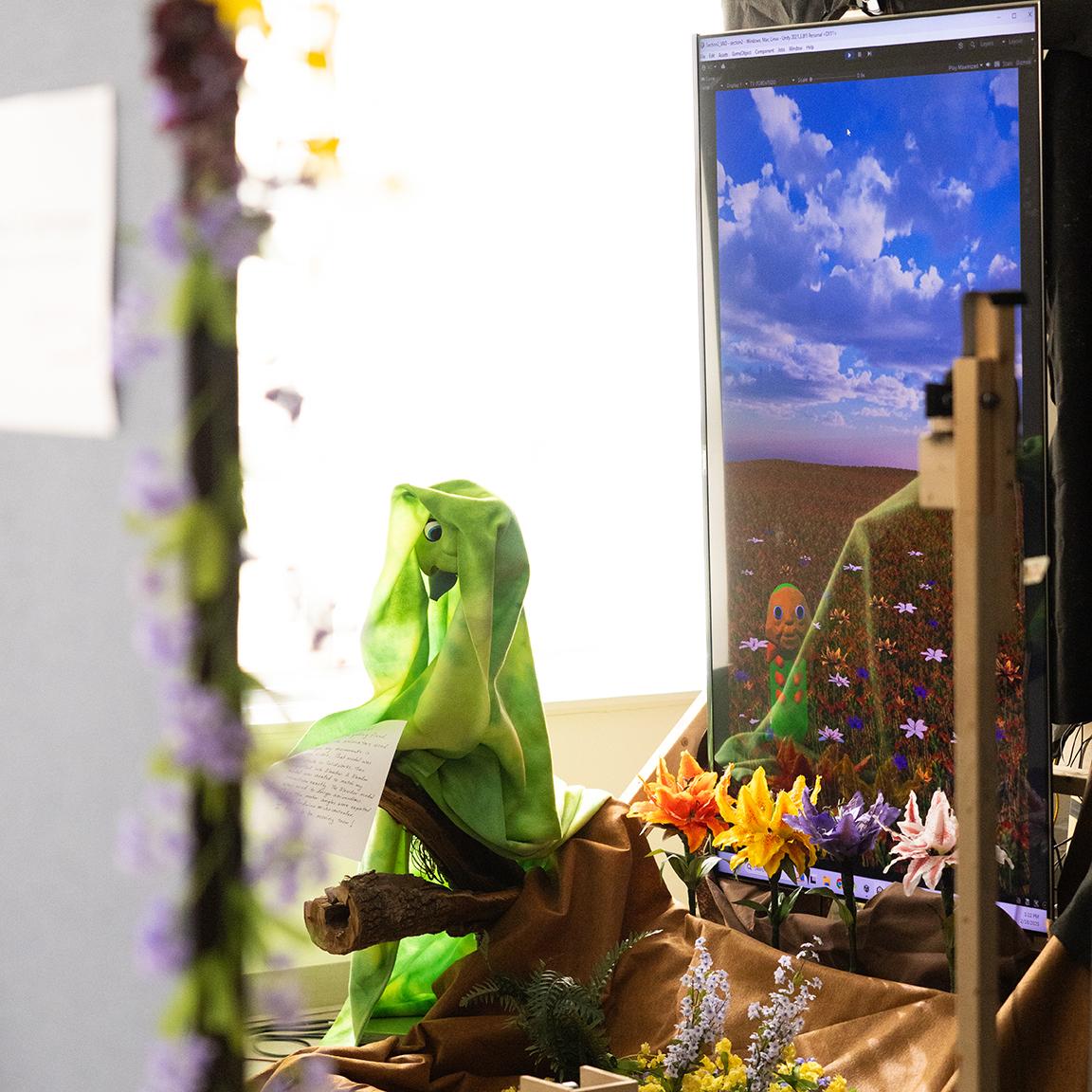
Cappy the Caterpillar, one of three animatronic narrators central to the story.
The ambitious project is also a milestone for Weitnauer. After a nearly 50-year career at Georgia Tech that started as an undergraduate student, she’s retiring from the faculty in May, making this her last Electronic ARTrium exhibition.
She’ll be going out on a high note, as her VIP students, like Agarwal, are walking away with a new appreciation for the combination of technical and personal skills required to pull off such complex projects.
“I didn’t know it was possible to work on such a big team and also still have such high stakes associated with my individual work,” Agarwal said. “I learned a lot about networking and working with a large group. These are things that will stay with me for the rest of my career. It’s been an amazing experience.”
(text and background only visible when logged in)
Related Content
Electronic ARTrium Wins Top Honor for Multidisciplinary Achievement
Through Georgia Tech’s Vertically Integrated Projects program, Electronic ARTrium's award-winning "Raise Your Hand" exhibit showcases collaboration across diverse disciplines, garnering recognition for its innovative approach.
(text and background only visible when logged in)
Georgia Tech Well-Represented at Leading Conference on Engineering Education
Georgia Tech educators and researchers showcased their work at the 2024 ASEE Conference in Portland, highlighting diverse disciplines and innovative educational methods.
(text and background only visible when logged in)
